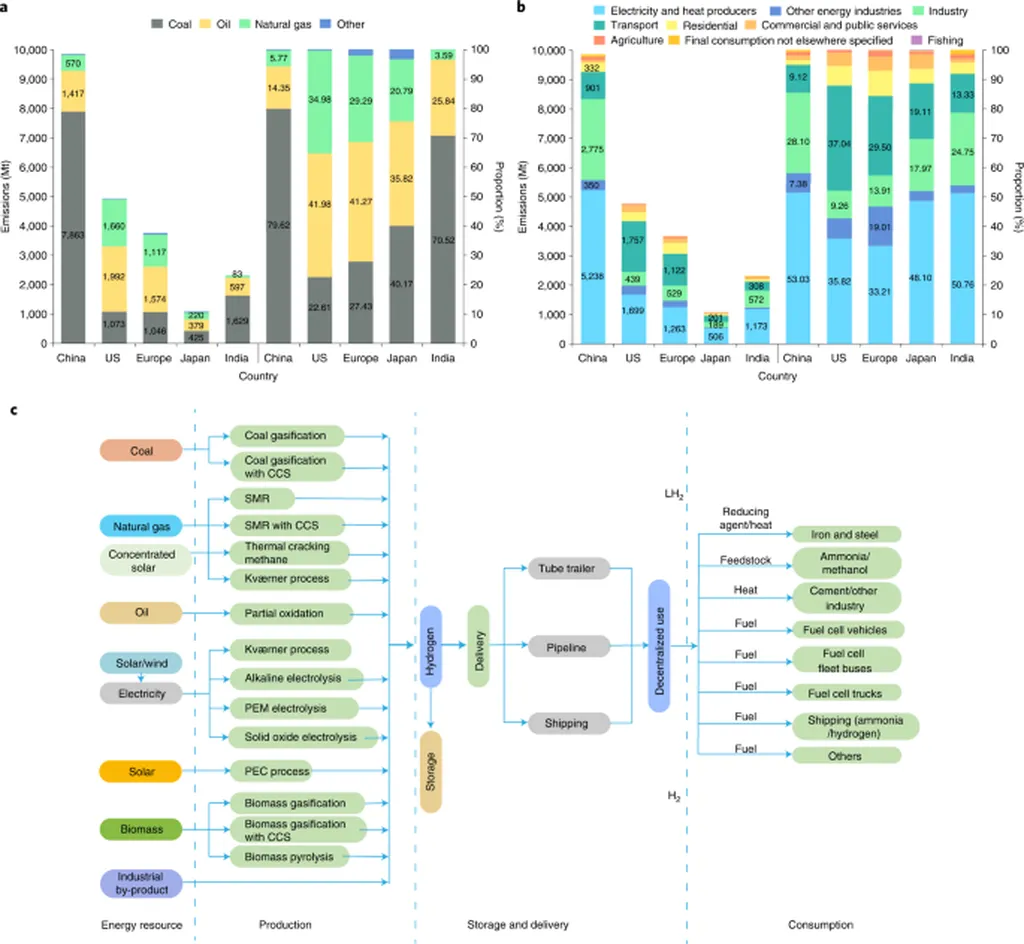In the quest to meet ambitious carbon peaking and neutrality goals, researchers are turning to integrated energy systems (IES) as a beacon of hope for a sustainable energy transition. A groundbreaking study, published in the journal *Energy Science & Engineering*, offers a novel approach to optimizing these systems, with promising implications for the energy sector.
Led by Hui Lu of the Guangzhou Power Supply Bureau of Guangdong Power Grid Co., the research introduces a sophisticated model that combines combined cooling, heating, and power (CCHP) with power-to-gas (P2G) technology. This integration is designed to enhance energy efficiency and slash carbon dioxide emissions, addressing two critical challenges in the energy landscape.
The study employs a matrix modeling method, a technique that significantly improves the accuracy of system modeling. “This method allows us to capture the complexities of the system more effectively,” Lu explains. “It’s like having a more precise map to navigate the intricate pathways of energy flow and conversion.”
One of the standout features of this research is the introduction of the FTS operation strategy. Traditional strategies, such as following electrical load (FEL) and following thermal load (FTL), often lead to heating waste. The FTS strategy, however, is designed to mitigate this issue, ensuring more efficient use of resources. “By avoiding the pitfalls of traditional strategies, we can achieve a more balanced and optimized operation of the IES,” Lu notes.
The study also introduces a correction matrix to account for uncertain factors like energy storage and renewable energy. This addition enhances the model’s robustness, making it more adaptable to real-world conditions. Furthermore, the research employs a per-unit value method to structure evaluation criteria, providing a standardized way to assess the system’s performance.
The results of the study are compelling. The proposed model, which integrates CCHP-P2G and the FTS operation strategy, demonstrates a significant improvement in the utilization of renewable energy. It also achieves notable reductions in both total operation costs and carbon emissions. “These findings highlight the potential of our approach to contribute to a more sustainable and economically viable energy future,” Lu states.
The implications of this research are far-reaching. For the energy sector, it offers a promising pathway to optimize integrated energy systems, enhancing their efficiency and reducing their environmental impact. As the world grapples with the challenges of climate change and the need for sustainable energy solutions, studies like this one provide valuable insights and tools to navigate the complex landscape of energy transition.
In the words of the researchers, this study represents a significant step forward in the quest for a more sustainable energy future. As the energy sector continues to evolve, the insights and methodologies presented in this research are likely to play a crucial role in shaping its trajectory.

